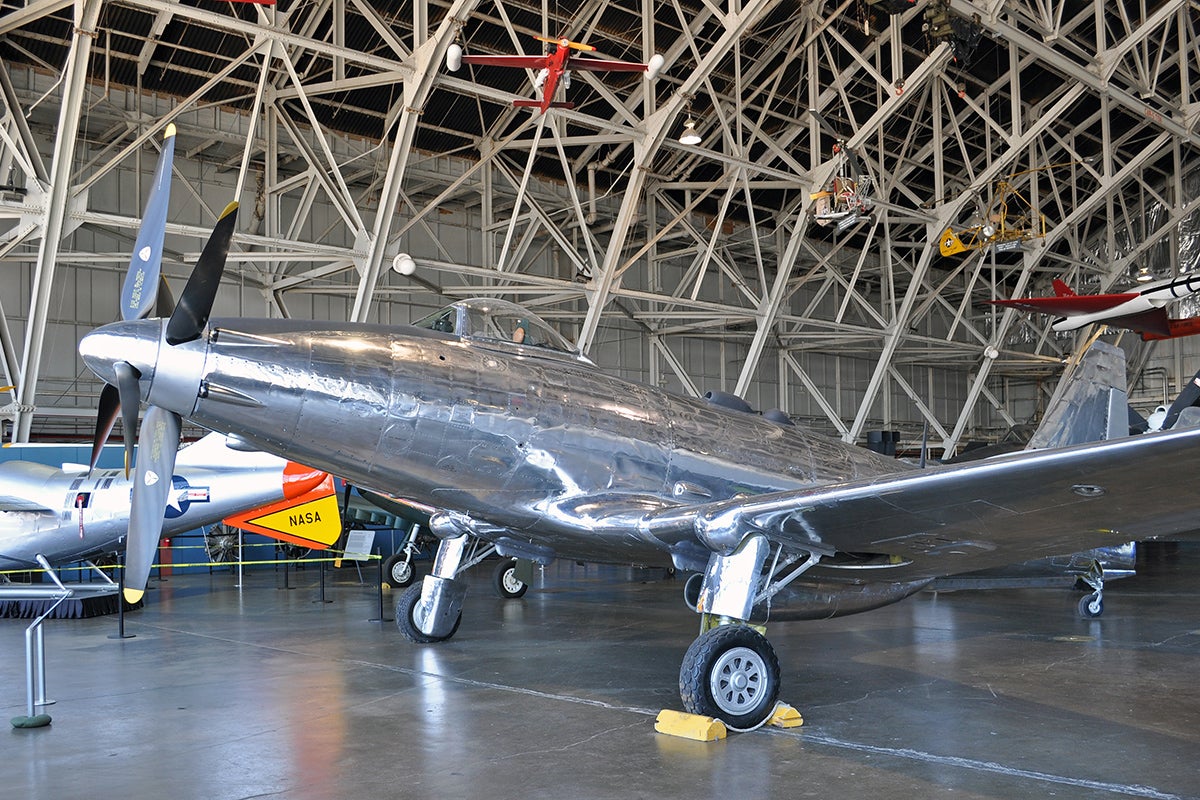In early 1942, the U.S. Army Air Forces wanted to add a high-performance fighter/interceptor to the fleet. Rather than opting for a modified version of an existing aircraft like the P-51 Mustang or P-38 Lightning, they ultimately decided to take a gamble on a wholly unconventional aircraft designed and produced by an auto manufacturer using unconventional design philosophies.
This aircraft became known as the Fisher P-75 Eagle and proved to be a poor bet in more ways than one.
At the time, the Fisher Body Division was a subsidiary of General Motors, employing more than 100,000 people and producing a variety of metal components in more than 40 plants. With the advent of World War II, capacity was shifted to the manufacture of airframe components for the war effort. Among the aviation-related contracts were agreements to produce airframe parts for the B-25 Mitchell as well as the production and assembly of 200 Boeing B-29 Superfortress bombers.
When the military ordered 2,500 P-75s that existed only on paper, Fisher aimed to utilize some automobile manufacturing philosophies to develop, build, and deliver the aircraft in time.
Airframe assembly for production is considerably different from the design, testing, and manufacture of an entirely new aircraft from scratch, however, and Fisher would learn this the hard way. Most notably, the company selected a new, experimental engine, placed it in the center of the aircraft rather than in the nose, and utilized two drive shafts to link it to twin contra rotating propellers. Both unconventional and complex, the powertrain created new problems that flight test engineers had to identify and solve.

The 24-cylinder Allison V-3420 engine was itself notable for its size and complexity. The design was based on the V-1710 engine as used in the P-38, P-51, and the P-40 Warhawk. The new engine essentially took two of these V-12 engines and mated them together to create a massive W-24 that produced 2,600 hp.
Perhaps recognizing the inefficiencies inherent in utilizing such unproven concepts, Fisher attempted to simplify the manufacturing process and expense of the aircraft through the use of existing components elsewhere in the airframe wherever possible. They utilized P-51 wings in initial versions, later switching to P-40 wings. The empennage and tail were repurposed from the Douglas A-24 Banshee, and the main landing gear came from the F4U Corsair.
Initial flight testing revealed serious problems, both aerodynamic and mechanical in nature. Miscalculations in the center of mass resulted in poor spin characteristics and stability issues. Fisher addressed these in part through a redesign of the tail, thus eliminating any production advantages to using the original A-24 tail.
Work also had to be done on the engine, as it was prone to overheating and wasn’t able to produce the specified horsepower. By the time the problems were addressed, the military realized it would be quicker and more cost-effective to modify proven aircraft types that were already in service. Shortly after production had started, the contract was canceled entirely with only eight prototypes and six production aircraft having been completed.

Of those 14 aircraft, three crashed during testing and all but one was scrapped. The sole remaining example, pictured here, has been restored and is presently on display at the National Museum of the United States Air Force in Dayton, Ohio.
